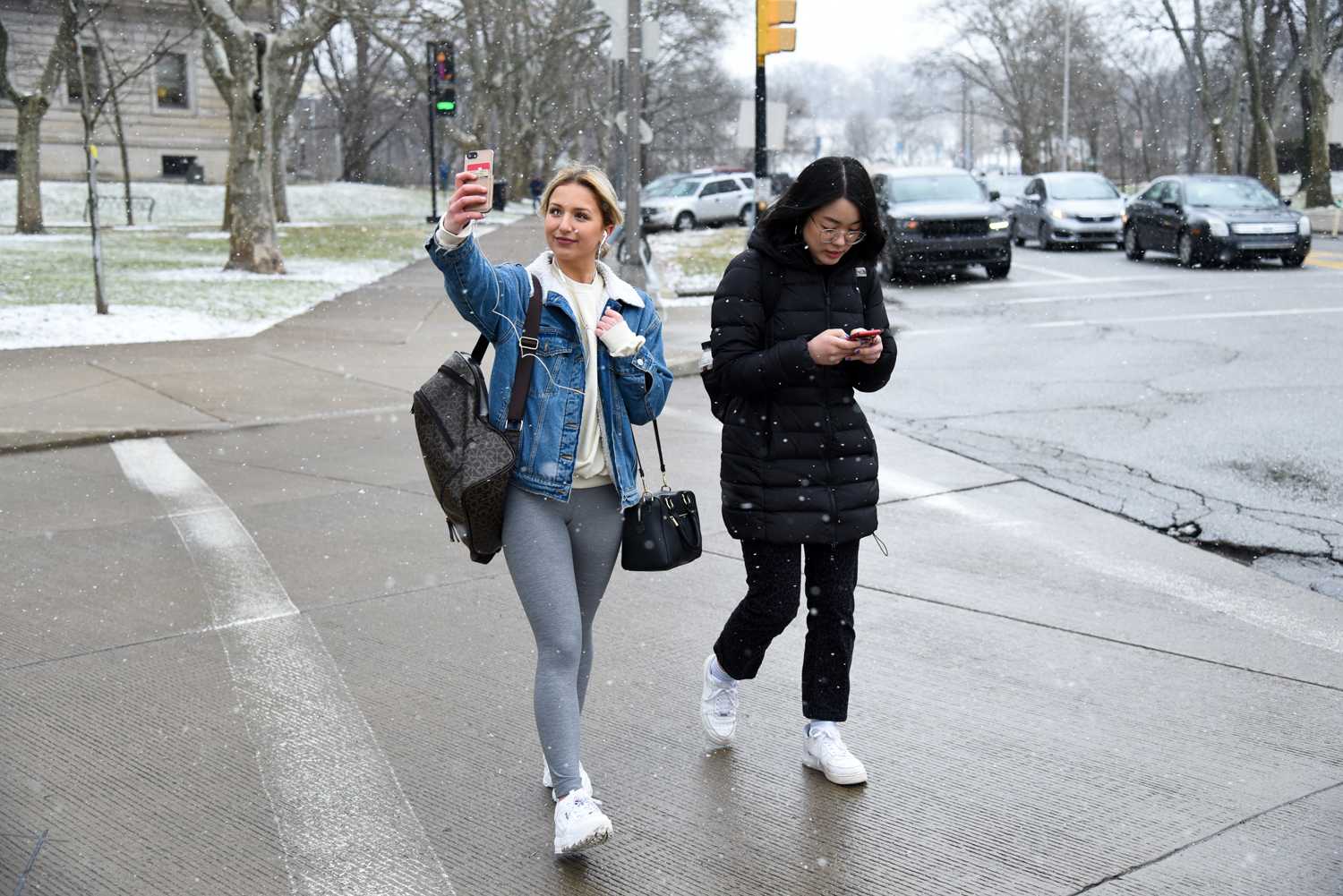Pitt study links social media and eating disorders


The School of Medicine’s 2016 study “The Association between Social Media Use and Eating Concerns among U.S. Young Adults” indicates a positive association between social media use and eating concerns in young adults.
As social media has continued expanding in the past decade, it has brought new types of cuisine and food experiences to people. But this has also brought questions about the effect of social media on user’s food consumption habits.
A recent research study by the University of Pittsburgh titled “The Association between Social Media Use and Eating Concerns among US Young Adults“ reveals that the rise in eating disorders, particularly body image concerns and anorexia, are linked to a higher use of social media sites. The study, led by Dr. Jamie Sidani, a researcher on adolescent health behavior, examined the rise of eating disorders among individuals.
According to Sidani’s study, previous research shows that people post images of themselves that showcase a positive aspect of their life.
“Therefore, users are likely to select from hundreds of more ‘accurate’ photographs the
scant few that may make the subject appear thinner and more attractive, in line with current social ideals,” the study said.
Sidani’s study illustrates that people who use social media are 2.2 times more likely to report eating and body image concerns.
“It is a perfect side of our reality, no flaws for the world to see,” Sidani said.
According to Sidani, even though her research was conducted nearly three years ago, it is still applicable to today’s issues.
“Some of the associations we found a few years ago persist,” Sidani said. “With all of the media attention about the topic, a lot of individuals have found ways to use social media in a positive way, such as realizing that what is presented on social media is not always reflective of real life.”
Out of all the generations, Generation Z faces the greatest challenge in how social media affects them, and not only when it comes to food. A study conducted by Yes Lifecycle Marketing indicates the power of social media in shaping shopping habits. According to the study, 80 percent of Generation Z is influenced by social media when it comes to making purchases — and this can also include the food they buy and the restaurants they visit.
For instance, according to first-year biology major Irene Cho, posts about food — particularly on Snapchat — shape the meals and the places she goes to.
“I would get hungry, which is weird because even though my stomach isn’t hungry, my brain is,” Cho said.
This familiar experience can be explained by Dr. Kevin Binning, a social psychologist at the University of Pittsburgh, who studies self- and social identities. He refers to the concept of variable-ratio, a phenomenon that seeks to bring about a particular behavior through the use of a variable, which in social media would be friends who post about a food experience. As a result, an individual would be more likely to attend an establishment to find the social gratification of being an in-group member.
“Social media companies know this about the human mind and they design their applications to capitalize on them,” Binning said. “Think about the ‘likes’ you get on a post. You don’t know when or who or how many people will like a post. You post it and then, slowly but surely, you start getting likes and people will follow the trends of these likes.”
While the modern portrayal of bodies and eating on social media has gained some negative spotlight, it has also been a source of good, particularly in nutrition. According to the Forbes article “How Social Media can Impact your Consumption Habits,” an increased exposure of food fosters more people to try new cuisines that they otherwise would not.
In addition, specific social media channels dedicated solely to nutrition provide a resource to help individuals who are seeking to be more healthy reach their goals.
Instagram channels such as College Nutritionist, which has more than 300,000 followers, provides simple and healthy homemade meals catered to students. The channel Feel Good Foodie provides yet another outlet for healthy eating centered on young professionals.
According to Sidani, channels such as these can also be used as a means of social empowerment. She notes that social media has the influence to provide exercise tips and healthy meals for users.
“One benefit of social media is that it can connect you to people and resources that you wouldn’t normally be able to access, at any time that fits your needs,” Sidani said.
She also asserts that while more research still needs to be conducted on social media and consumption habits, it is nonetheless evident that it has a crucial role in shaping the current generation’s food palate.
Moreover, Binning acknowledges the disparity that exists among the users, noting that it is partly due to the changing environments of students. According to Binning, some tips to counteract the psychological techniques used by sites include turning off notifications as well as visiting tempting food channels less often.
“Youth are more vulnerable, not simply because they are more likely to use social media than older adults, but also because their social networks tend to be in greater flux,” Binning said.
Recent Posts
SGB introduces new governing code bill and addresses rumors of ICE on campus
At its weekly meeting at Nordy’s Place on Tuesday, Student Government Board introduced an omnibus…
Opinion | School should be in the summer
Although this may be controversial, I believe that from this data, it is evident that…
Weathering the storm: Pittsburgh teams have tackled some of the toughest environments
The end of the year in western Pennsylvania is always marked by two things —…
Notes From an Average Girl // Notes on Book Banning
In this edition of Notes From an Average Girl, senior staff writer Madeline Milchman writes…
To Be Honest // Yup, it is that damn phone
In this edition of To Be Honest, staff writer Evin Verbrugge writes about her phone…
Meaning at the Movies | Portraying Toxic ‘Adolescence’
In this edition of Meaning at the Movies, staff writer Lauren Deaton explores the mini-series…

